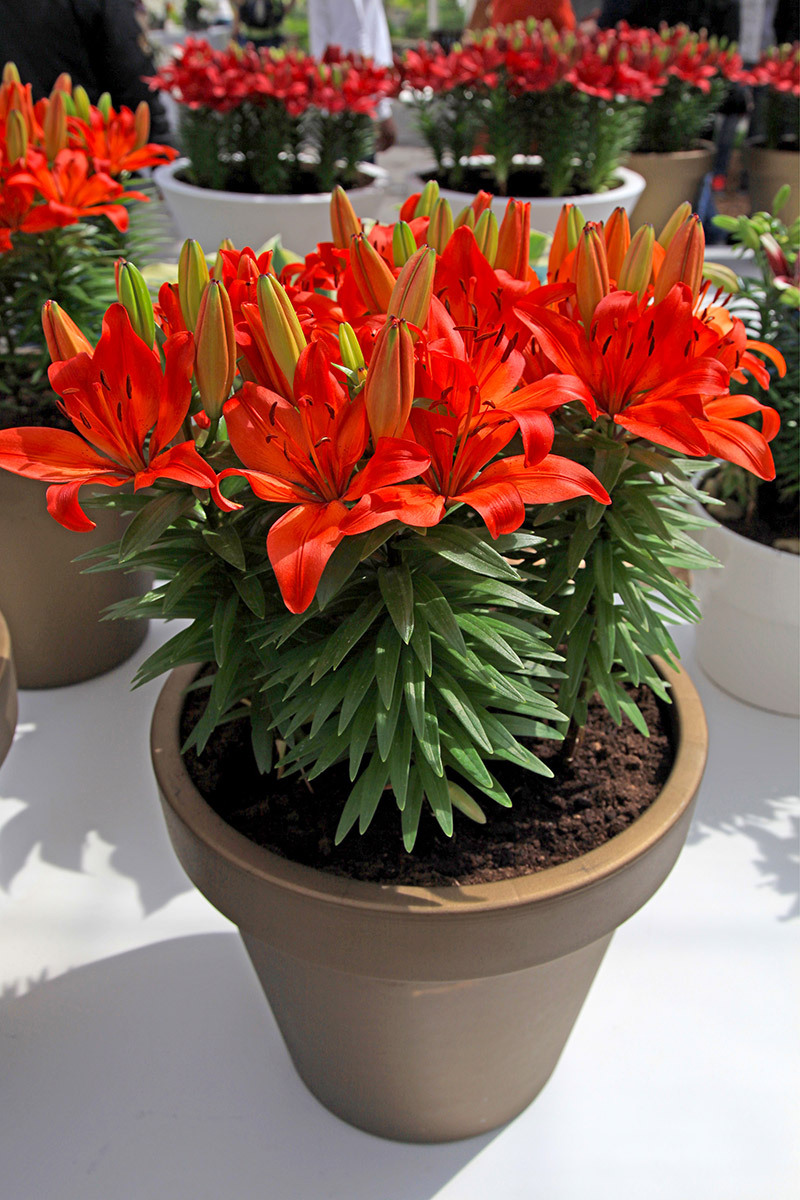Unlocking the Full Potential of Your Hydrangeas
Posted on 17/08/2025
Unlocking the Full Potential of Your Hydrangeas: The Ultimate Guide
Hydrangeas are among the most beloved flowering shrubs in the garden, prized for their lush blooms, vibrant colors, and dynamic foliage. But many gardeners wonder how to maximize their hydrangeas' potential and keep them healthy, abundant, and beautiful year after year.
In this comprehensive article, we'll demystify the secrets of growing breathtaking hydrangeas. Whether you're just starting out or you're a seasoned gardener, you'll discover techniques, tips, and insights that will help you unlock the full potential of your hydrangeas and turn your garden into a show-stopping floral paradise.

Understanding Hydrangeas: A Quick Introduction
The first step in growing spectacular hydrangeas is understanding the plant itself. Hydrangeas are deciduous flowering shrubs native to Asia and the Americas, and there are several common species grown in homes and gardens. Each type brings different charm and requirements to your landscape:
- Bigleaf hydrangeas (Hydrangea macrophylla) - Known for their classic mophead or lacecap flowers, and ability to change color based on soil pH.
- PeeGee or Panicle hydrangeas (Hydrangea paniculata) - Loved for their cone-shaped blooms and cold hardiness.
- Oakleaf hydrangeas (Hydrangea quercifolia) - Unique foliage that resembles oak leaves; stunning fall color.
- Smooth hydrangeas (Hydrangea arborescens) - Large, white flowers; often called 'Annabelle' hydrangea.
- Climbing hydrangeas (Hydrangea petiolaris) - Excellent for walls, fences, or trellises.
Tip: Identifying your hydrangea type is crucial before pruning or adjusting care, as requirements can differ significantly.
Choosing the Perfect Spot for Your Hydrangeas
To truly maximize hydrangea growth and blooms, site selection is critical. Hydrangeas thrive best in locations with:
- Morning sun and afternoon shade - Especially important in hotter climates.
- Well-drained but moist soil - Hydrangeas do not like to dry out.
- Protection from harsh winds - Shelter ensures sturdier stems and longer-lasting blooms.
- Space - Give hydrangeas room to grow and spread, as crowding can reduce air circulation and increase disease risk.
Expert tip: Check your hydrangea's specific light requirements--panicle hydrangeas, for example, tolerate more sun, while bigleaf hydrangeas can scorch in full sun in southern gardens.
Amending Your Soil for Optimal Hydrangea Health
Hydrangeas prefer rich, loamy soil with plenty of organic matter. Preparing your garden bed before planting--or refreshing each spring--can make a huge difference:
- Mix in compost or well-rotted manure for nutrients and texture.
- Test your soil's pH if you want to adjust bloom color (see more below).
- Ensure good drainage to avoid root rot. Raised beds or mounds can help in heavy clay areas.
Pro tip: Add a layer of mulch each season to retain moisture and regulate soil temperature.
Mastering Watering Techniques
One of the keys to unleashing the beauty of hydrangea blooms is giving your plants the right amount of water:
- Deep, thorough watering is more effective than frequent, shallow sprinklings.
- During hot spells, hydrangeas need at least 1 inch of water per week.
- Water at the base (not overhead) to reduce fungal disease.
- Mulch helps lock in moisture!
Remember, wilting leaves are a classic signal that your hydrangeas need attention. Adjust watering as seasons and temperatures shift.
Fertilizing for Full, Lush Growth
Proper feeding is vital if you want to maximize hydrangea flower production and vigor. Here's what you need to know:
- Bigleaf and mountain hydrangeas: Fertilize twice--once in spring as buds break, and again after the first flush of blooms.
- Panicle and smooth hydrangeas: A single slow-release fertilizer in spring is usually sufficient.
- Use a balanced, slow-release fertilizer (10-10-10 or similar for general needs).
Tip: Over-fertilizing, especially with nitrogen, can lead to abundant leaves and fewer blooms. Always follow package directions and err on the side of caution.
Bloom Color: The Magic of Soil pH
Did you know you can change the color of some hydrangea flowers just by adjusting your soil's pH? This is most famous with bigleaf hydrangeas (Hydrangea macrophylla):
- Acidic soil (pH below 6): Produces blue to purple blooms.
- Alkaline soil (pH above 7): Results in pink to red blooms.
How to change hydrangea color:
- For blue flowers: Add aluminum sulfate or organic amendments like pine needles or coffee grounds to lower pH.
- For pink flowers: Use garden lime to raise pH.
Note: Not all hydrangeas respond to pH changes. Panicle and oakleaf hydrangeas, for example, stay white regardless of soil acidity.
Pruning Strategies to Unlock Hydrangea Potential
Pruning correctly is one of the most confusing--but essential--parts of maximizing hydrangea performance. Prune at the wrong time, and you could cut off next season's flowers!
When & How to Prune Each Type
- Bigleaf, mountain, and oakleaf hydrangeas: Bloom on "old wood" (last year's growth). Prune in summer, right after flowering, to shape the plant and remove spent blooms, dead wood, or weak stems.
- Panicle and smooth hydrangeas: Bloom on "new wood" (current season's growth). Prune in late winter or early spring, before new growth, cutting back stems by up to one-third or as needed for shaping.
Key tips:
- Never prune late in the fall--this can remove new buds forming for next year.
- Remove old, less productive stems at the base to encourage vigorous new shoots.
- Deadhead spent blooms as needed for tidier plants and sometimes improved reblooming.
Combating Pests and Diseases for Healthier Hydrangeas
To ensure your hydrangeas reach their full potential, keep a sharp eye out for pests and diseases:
- Pests: Aphids, spider mites, and scale insects are the most common. Blast with a strong jet of water or use insecticidal soap if needed.
- Diseases: Powdery mildew, leaf spot, and root rot threaten hydrangeas, especially in wet, humid, or poorly ventilated conditions. Space your plants for good air circulation, avoid overhead irrigation, and remove affected leaves.
Healthy, well-maintained hydrangeas are naturally more resilient to threats--don't skip basic care!
Enhancing Blooms with Proper Support & Maintenance
Some varieties--especially smooth ("Annabelle") and bigleaf hydrangeas--are known for flopping after heavy rain. To help your plants look their best:
- Stake large flower heads as they develop, or use discreet plant supports.
- Prune to encourage strong, thicker stems.
- Mulch to protect roots and conserve moisture.
- Enjoy blooms as cut flowers, or let them dry on the shrub for fall and winter interest.
Winter Care for Year-Round Hydrangea Success
To protect your hydrangeas in winter, you'll need to be Extra-cautious with bigleaf and oakleaf hydrangeas in colder regions:
- Apply 2-3 inches of mulch (straw, leaf mold, or shredded bark) over the root zone in late fall.
- Wrap shrubs in burlap if winter winds are strong or temperatures drop below variety limit.
- For container-grown hydrangeas, move pots to a sheltered, unheated location.
Come spring, gradually remove mulch and inspect stems for new buds. Prune only dead wood, as live stems may flower even after tough winters.
Creative Landscaping Ideas with Hydrangeas
Unlocking your hydrangea's potential isn't just about maximizing blooms--it's also about how you use their beauty in the landscape!
- Foundation plantings: Hydrangeas brighten the base of your house with bold leaves and soft flowers.
- Mixed shrub borders: Combine with evergreens, roses, or grasses for season-long color.
- Container gardens: Shorter varieties thrive in pots--move them for sun, shade, and accent color.
- Woodland gardens: Oakleaf and bigleaf hydrangeas blend perfectly with other shade lovers and hostas.
- Cut flower arrangements: Harvest blooms for stunning bouquets that last indoors for weeks.
Let your imagination soar--the versatility of hydrangeas knows no bounds.
Seasonal Care Calendar: Keeping Hydrangeas Thriving Year Round
Unlock your hydrangea's full potential by following a year-round care routine:
- Spring: Fertilize, prune as needed by type, apply mulch, and start regular watering.
- Summer: Deep watering, deadhead spent blooms, monitor for pests and diseases.
- Fall: Reduce feeding, tidy plants, add mulch for winter protection. Enjoy late-season color!
- Winter: Protect roots and stems in cold climates as needed. Plan next season's garden!

Frequently Asked Questions About Hydrangeas
- Why isn't my hydrangea blooming? Most often, buds are cut off by pruning at the wrong time, cold damage, or lack of sunlight.
- Can I change my hydrangea's color? Only for bigleaf and some mountain hydrangeas, and adjustments may take a season or more to show.
- How often should I water? Once or twice weekly, depending on weather, with deep soaking as needed.
- Do I need to fertilize every year? Yes, but use a gentle hand, as too much fertilizer can reduce blooming.
Unlock the Joy of Growing Spectacular Hydrangeas!
Few plants offer the versatility, impact, and all-season beauty of the hydrangea. By following these expert tips--choosing the right site, feeding and watering well, pruning at the right time, and staying alert to pests and changes--you'll be rewarded with abundant blooms and a garden that bursts with color, texture, and vitality, year after year.
Start applying these techniques today and see how quickly you unlock the true potential of your hydrangeas--and the full charisma of your garden!
Related Resources for Further Reading
- Royal Horticultural Society - Hydrangea Care Guide
- University of Minnesota Extension - Growing Hydrangeas
- Garden Design - Complete Hydrangea Guide
Unlock the full beauty of hydrangeas in your garden--get started today!
Latest Posts
Unlocking the Full Potential of Your Hydrangeas
Nurture Your Orchids with Expert Advice
Simplify Office Decor: 10 Best Low-Maintenance Indoor Plants
Keep your holiday poinsettias vibrant longer
Your Birth Flower and Its Surprising Revelations About Who You Are





